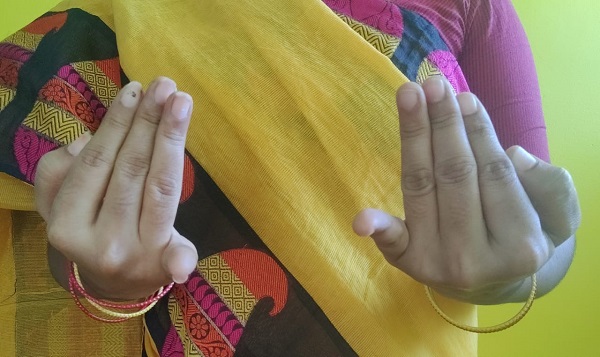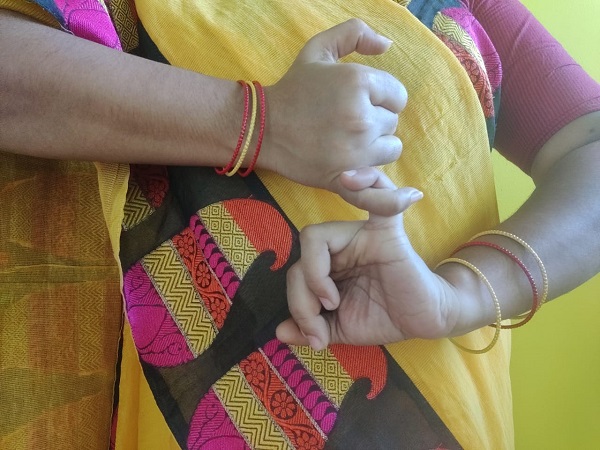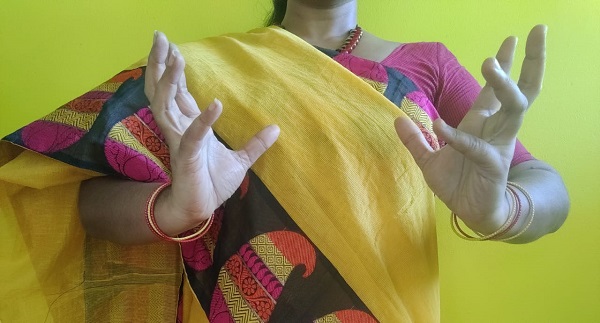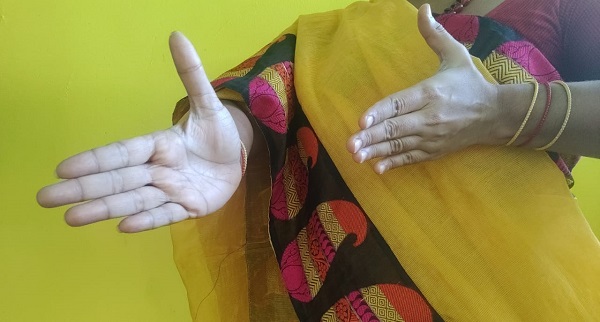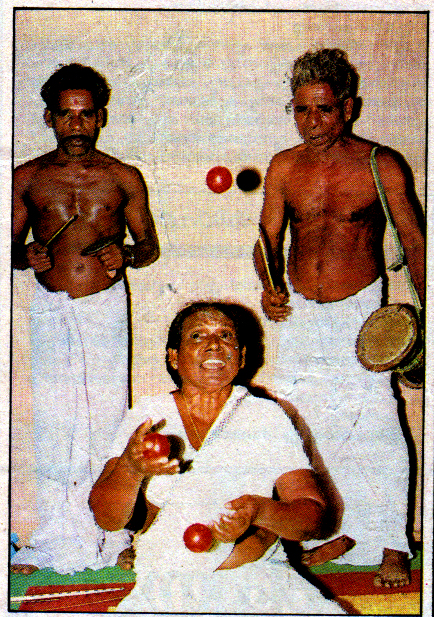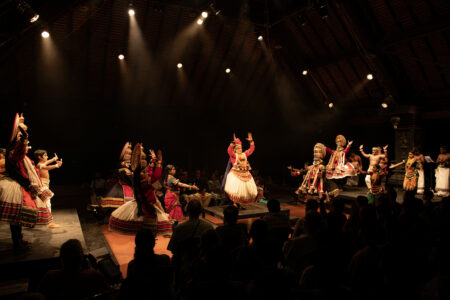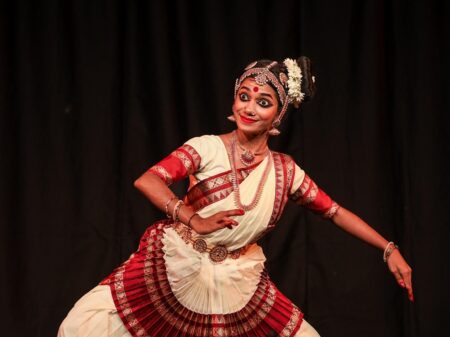With a strong academic knowledge, Dr Kalamandalam Rachitha Ravi, a Mohiniyattam danseuse par excellence belongs to the younger generation of artists of the dance form. Graduated from Kerala Kalamandalam Deemed to be University for Art and Culture, she pursued her post-graduate studies at Sree Sankara University of Sanskrit, Kalady. She completed her PhD in “The scientific foundation of Mohiniyattam – A detailed Study with Balaramabharatham”. Coming back to her alma mater, Rachita joined the faculty of the Mohiniyattam department in 2009. Currently, she is an Assistant Professor under the UGC scheme. A versatile performer and a choreographer, she has been invited to major festivals, seminars and workshops across India. In a recent interview, Rachitha expatiates on the intrinsic values of the book Balaramabharatham and also underscores the necessity for including the same in the Mohiniyattam syllabus at the postgraduate level.
Excerpts:
How did you come to know about Balaramabharatham?
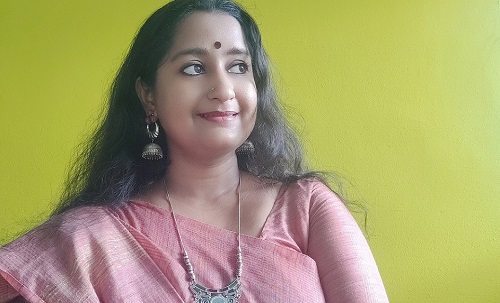
The spark came from a lecture by Dr Kanak Rele at a workshop in Thrissur organised by the cultural organisation ‘Bharatham’. Presenting some aspects from the book Balaramabharatham. Dr Rele wondered why dancers from Kerala did not use this book for their academic studies. Later I approached Dr Geetha, the then-principal of Govt College, Pattambi, who later became my PhD guide. She was very encouraging and I went about collecting written materials about this topic, including a book by Dr V S Sharma on Balaramabharatham.
Can you please explain about Balaramabharatham and what it means for a Mohiniyattam artist?
Balaramabharatham is a Sanskrit treatise on Natyam written by Karthika Thirunal Bala Rama Varma, who was the king of Travancore from 1724 to 1798. It is a study of the ancient texts Natyasasthra and Natyadarpanam. It can be defined as the traditional scientific performance manual for our artforms. Many of the hasthas referred to in Balaramabharatham were used by our Koodiyattam performers and teachers. It was almost as if this book was here, but nobody noticed it.
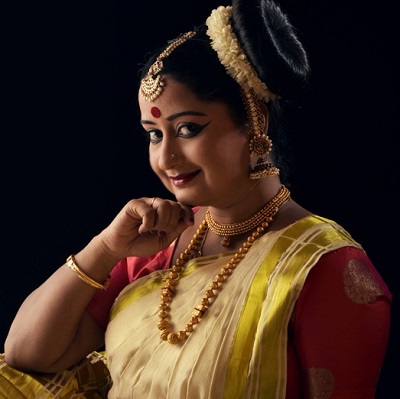
Karthika Thirunal wrote the primary text with a focus on the performance aspects of the art forms. The theories are commonly applicable to all classical art forms such as Kathakali and Koodiyattam. Based on performance and academic theories, Sharma divided it into six chapters. Though there is no specific remark of the word Mohiniyattam, the term ‘Mohininilayam’ is mentioned in the book. Another important expression used in the book is of ‘conveying of rasa through panjendriyas, which means, mode of transmitting the emotion from the actor to the audience through five senses.
What were the findings of your research?
Karthika Thirunal had mentioned about 67 hastha mudras in this book. Most of them are derived from images in our daily life. Consider, for example, samyuktha pallavam to depict the lotus flower, and visthrutha pallavam to show a vessel. Similarly, gajadanda hastham to show a tunnel and bharathee hastham for reading a book are common to art and our everyday life. I also noticed that Subhasobhana Hastha, with the two little fingers in a knot, was used in an old varnam to express ‘love’. There are many such examples and I believe this is an important text for performing artists.
I realised that much of the content of Balaramabharatham was not fully explored or used by either the performers or the teachers in Kerala. However, in Bharatanatyam, many dancers are using some of the hasthas without proper knowledge of the technical names mentioned in the book. Koodiyattam exponent Ammannur Madhava Chakyar too has been using some hasthas for Koodiyattam, as I later found out from his student Usha Nangiar. Further, I could understand that this book is only a preface. Being an expert in music and dance, Karthika Thirunal mentioned the need for this book in the ‘Anubandha Chathusthtayam’ — which means four different aims such as ‘Prayojanam’, ‘Sambandham’, ‘Grandha Prathipadyam’ and ‘Adhikari’. I intended to give an introduction to this book and develop an acting methodology based on the body kinetics in Mohiniyattam.
Did your research findings have any contemporary relevance? Any application in today’s Mohiniyattam training and performance?
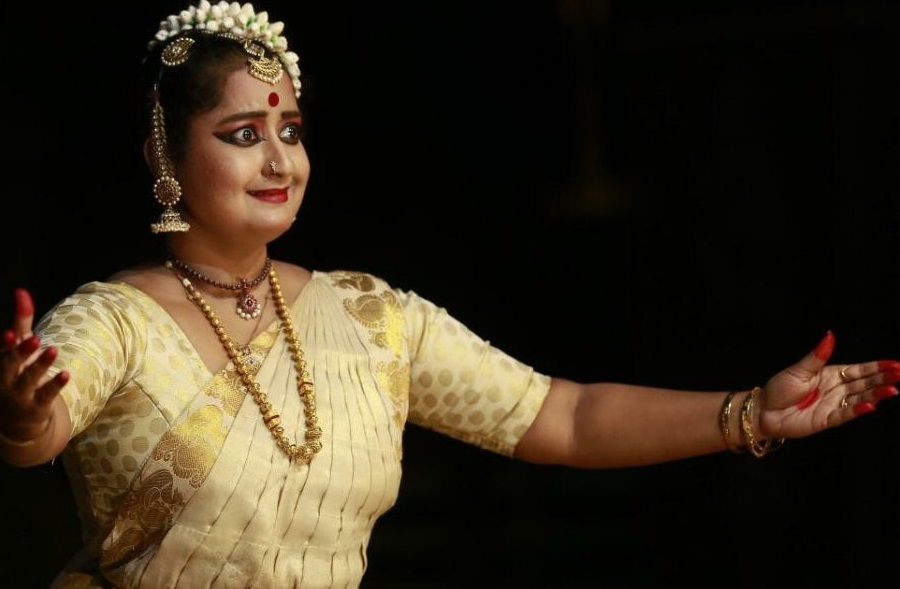
My primary aim was to introduce this text to the arts community. Secondly, I have been using some of these hastas in my choreographies. I also wish to see this performance manual added to the syllabus in Kalamandalam. At seminars and talks, I will certainly work towards creating awareness about Balaramabharatham, its importance and relevance to both artists and connoisseurs. I realise many conservative artists will never accept the introduction of these methods into the training regimen at Kalamandalam. But I am convinced many in the young generation of dancers and art enthusiasts will welcome such a move.
What kind of new possibilities Balaramabharatham is opening in front of the artists especially Mohinyattam dancers.?
In the earlier days, Mohiniyattam was depending highly on Swathithirunnal krithis and Irayimman Thampi’s works for stage presentations. Books like Hastha Lakshana Deepika and Abhinaya Darpanam were the references for mudras. But, Balaramabharatham opens a treasure for a Mohiniyattam artist especially in the ‘mudra viniyoga[rendering of hasthas]. This book purely narrates the ‘Angika abhinaya’ and strongly stresses the word ‘the body of the dancer[nrutha sareeram] and in the scientific word ‘Adhikari’. There is no specific mention of Vachikam or Aharyam. I feel nobody had noticed the possibilities of Balaramabharatham when the present structure of Mohiniyattam was developed during 1932-1950. A dancer who is interested in experimenting with his/her art can adopt many of the acting techniques from it. As I said earlier, an artist can use many of the acting techniques and improve the quality of the performance by a close study of Balaramabharatham.
You are an Ustad Bismillah Khan yuvapuraskar awardee and a renowned Mohiniyattam dancer belonging to the younger generation. What are your views on the academic side and the performance area of this artform?
I was trained in Mohiniyattam in the very traditional method prevailing in Kerala Kalamandalam. All my teachers were well-trained performers as well as renowned gurus. But after I returned to Kalamandalam as a teacher, I think my role is different. I believe we need to adapt to the times and adopt new strategies for training. There is nothing wrong with experimenting new methodology and techniques in teaching. We need to think of the global perspective and reach of this art form. And that should reflect in our classrooms too.


